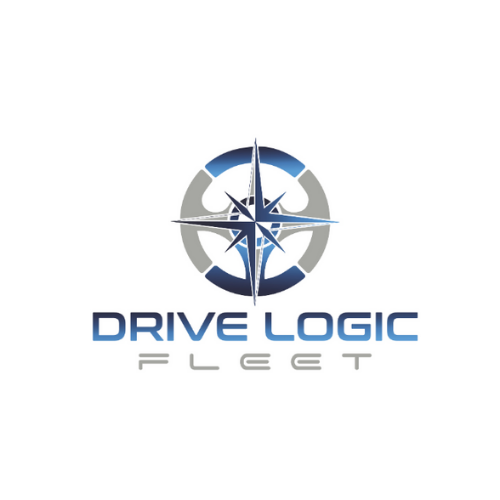Paseos disponibles

por Bernadette VA
•
10 de mayo de 2025
Fleet Expansion Timing: When to Add Vehicles Without Overextending Growing a transportation business is exciting—but adding vehicles too quickly or without a clear strategy can lead to cash flow issues, underutilized assets, and insurance headaches. Timing your fleet expansion is just as important as funding it. Whether you're running NEMT, private tours, shuttles, or a small taxi operation, knowing when to expand—and when to wait—can be the difference between scaling sustainably and stalling your business. Here’s how to evaluate the right time to add vehicles to your fleet without overextending your resources. 1. Measure Vehicle Utilization Before Expanding If your current vehicles are idle during key hours or your drivers are waiting for jobs, it’s too early to grow. But if you're regularly turning down rides or pushing your current fleet to its limits, expansion may be justified. What to measure: Average number of trips per vehicle per day Hours vehicles are active vs. idle Booking rejection rates due to capacity Driver overtime or burnout levels Tip: Use dispatch and trip logs to analyze trends—not just gut feeling. 2. Look at Booking Trends Over 90–120 Days One busy week doesn't mean it's time to invest in more vehicles. Review your business trends across multiple months to identify consistent demand . Check for: Seasonal peaks vs. year-round growth New contract wins or account-based increases Repetitive scheduling conflicts or missed revenue Growth should be based on reliable income—not just temporary spikes. 3. Secure the Right Drivers Before Adding Vehicles A new vehicle won’t generate revenue if it doesn’t have a qualified driver. Before purchasing or leasing, make sure your hiring pipeline is healthy . Ask yourself: Do you have qualified drivers ready or in training? Can you meet licensing, insurance, and onboarding requirements fast enough? Will adding a new driver compromise service quality or training standards? Driver availability should match vehicle growth to prevent unnecessary downtime. 4. Confirm Financing or Cash Flow Can Support New Costs A new vehicle brings more than a payment—it brings insurance, registration, fuel, maintenance, and operational costs. Do the math first. Cost factors to include: Monthly loan or lease payments Commercial insurance premiums Routine maintenance and mileage-based service Expected downtime for onboarding and branding Tip: Have 3–6 months of projected vehicle costs accounted for—preferably from profits, not debt. 5. Evaluate Your Market Position Expansion should support your brand promise —not dilute it. If your service is known for quality, reliability, or luxury, adding too many vehicles or inexperienced drivers can hurt your image. Evaluate: How growth aligns with your service niche Whether demand is coming from your ideal customer base If current clients are requesting more coverage or locations Growth should reinforce your market reputation—not compromise it. 6. Test Demand Before Committing Before fully expanding, test new areas or time slots using creative approaches like: Renting a vehicle short-term Partnering with another fleet owner Running a limited-time offer for a new service window Pilot programs can validate your assumptions and save you from long-term commitments if demand falls short. 7. Use KPIs to Track Expansion Readiness Track these metrics monthly to decide when to grow: Vehicle occupancy/utilization rate Revenue per vehicle Cost per mile Driver turnover Client demand vs. fulfillment rate If 3 or more of these show consistent upward trends for 90+ days, you’re likely ready to grow. Final Thoughts Growing your fleet isn’t just about buying more vehicles—it’s about buying the right vehicle at the right time for the right reason . Rushing into expansion can drain resources, stretch operations, and damage your brand. But with data, planning, and discipline, you can scale your transportation business with confidence. Need Help Building a Fleet Growth Plan That Works? Drive Logic Fleet helps transportation companies expand profitably, avoid overextension, and match their growth to real-world demand. Schedule your strategy session today to create a fleet expansion plan backed by numbers, not guesswork.

por Bernadette VA
•
9 de mayo de 2025
The Silent Threat of Poor Recordkeeping in Transportation Operations—And How to Fix It In the transportation industry, success depends on more than just getting from point A to point B. Behind every vehicle, driver, and dispatch is a system of paperwork, records, and documentation that keeps the business compliant, protected, and profitable. But for many small fleet owners, poor recordkeeping is an overlooked risk—one that can lead to lost revenue, legal trouble, and operational breakdowns. Here’s why proper documentation matters in transportation operations—and how to fix the gaps before they cost you. Why Recordkeeping Matters in Transportation In a highly regulated, liability-heavy business like transportation, records are more than a formality. They are your first line of defense in the event of an audit, claim, or customer dispute. Good recordkeeping supports: DOT, TLC, and insurance audits Payroll accuracy and tax reporting Legal protection in accident claims Vehicle maintenance scheduling Efficient dispatch and route planning Client billing and invoice tracking Without proper records, it’s nearly impossible to scale, stay compliant, or prove your side in a dispute. Common Recordkeeping Mistakes That Hurt Fleet Businesses Missing or Expired Driver Documents Forgetting to track licenses, medical cards, or background checks exposes your business to major liability. No Centralized Maintenance Logs If you’re not documenting oil changes, inspections, or repairs, you’re at risk of costly breakdowns—and DOT citations. Inaccurate Mileage and Trip Records Mileage tracking isn’t just for maintenance—it's required for taxes, fuel deductions, and usage-based insurance. Lost Receipts or Fuel Logs Poor expense tracking means you're likely missing out on tax deductions and reimbursements. Unfiled Contracts or Client Agreements Verbal deals or informal contracts create confusion—and can be hard to enforce if things go wrong. The Risks of Poor Documentation 1. Audit Penalties Insurance, DOT, or IRS audits can result in fines or policy cancellations if records are missing or inaccurate. 2. Legal Exposure If you can't prove that a driver was certified, trained, or insured during an incident, your business is vulnerable to lawsuits. 3. Operational Inefficiency Lost documents slow down dispatch, billing, and vehicle upkeep, leading to delays and higher operating costs. 4. Missed Growth Opportunities Without organized records, it's difficult to apply for loans, scale operations, or qualify for larger contracts. How to Fix It: Recordkeeping Best Practices for Fleet Owners Go Digital Where Possible Use fleet management software or cloud-based platforms (like Google Workspace, Fleetio, or QuickBooks) to store and organize documents securely. Create a Filing System by Category Divide records into key categories: drivers, vehicles, compliance, billing, and insurance. Each category should have both active and archived folders. Schedule Regular Reviews Set calendar reminders to review records monthly—check for expiring licenses, missing documents, or outdated logs. Use Checklists for Onboarding and Compliance Standardize processes with forms and checklists so that every hire, inspection, or policy renewal follows the same steps. Back Up Everything Keep both physical and cloud backups of your most important documents. Don’t rely on one source alone. Final Thoughts Poor recordkeeping is a quiet problem that leads to loud consequences. From lawsuits to lost contracts, small gaps in documentation can create major setbacks. But with a structured, proactive approach, your business can stay organized, audit-ready, and built to grow. Need Help Organizing Your Fleet’s Back Office? Drive Logic Fleet helps transportation business owners create practical systems to manage driver files, vehicle records, billing, and compliance—all without hiring a full admin team. Schedule your consultation today and start building a smarter, safer, and more scalable business.
Centro de recursos educativos
Explore contenido valioso diseñado para ayudarlo a hacer crecer su negocio de flotas y mantenerse por delante de la competencia.
Categorías de recursos:
Artículos del blog (Consejos para flotas, asesoramiento financiero)
Estudios de caso (Historias de éxito)
Guías descargables
Contáctenos en:
drivelogicfleet@gmail.com
icarridetransportation@gmail.com



